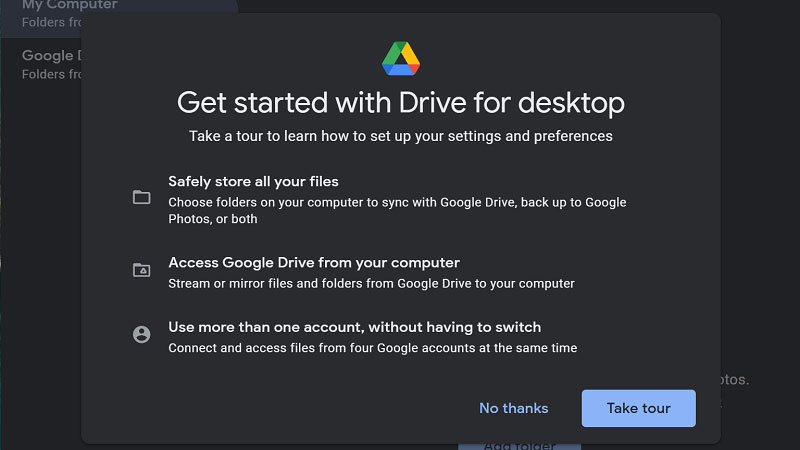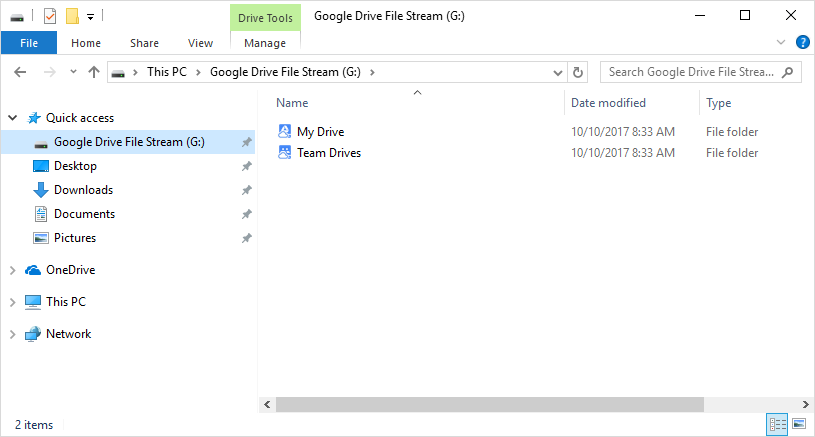

- #Currently using google drive for mac/pc and need to transition to drive file stream mac
- #Currently using google drive for mac/pc and need to transition to drive file stream windows
This image shows how the new Google Drive for Desktop makes switching between accounts easy. You had to have both Backup and Sync, as well as File Stream, installed on one computer. You could do this before with the old solutions, but it was clumsy. This means that you can interact with both your personal and work Google Drive data on the same device. What’s more, Google Drive for Desktop maps your personal and work Drives. The main difference between the new solution and the old one is that Google Drive for Desktop works with personal Drive accounts, as well as work accounts. The New Solution? Google Drive for Desktopĭrive for Desktop is the new name for File Stream. This saves precious space on your device.īoth solutions, Backup and Sync as well as File Stream, are going away soon because Google has replaced them.

But File Stream makes accessing them a matter of a double-clicking to open. Instead, they get moved to Google Drive in the cloud. When you save files to File Stream, they don’t stay on your computer. Instead of saving files on your computer (and taking up precious space), all files are in the cloud. File Stream worked much like Backup and Sync, except for one important difference. If you work in an environment with Google Workspace, like at school, then you may have relied on Google File Stream. Google Workspace Account – Google’s File Stream Some times, when trying to put large files via your web browser into Google Drive, things don’t work so well. The main benefit of Backup and Sync is that you can back up large files on your device. Files take up space in both places, on your device and in Google Drive. For educators, that means you use Backup and Sync to put and get files in your Google Drive. Many of us still rely on Google’s Backup and Sync for personal or consumer Google accounts. Source: Google Blog Personal Gmail Account – Google’s Backup and Sync For additional details on the transition from Backup and Sync to Drive for desktop, please refer to this Help Center article. After this point, users will see an in-product notification notifying them they’ll need to transition to continue syncing their files. In the coming weeks, Backup and Sync users will begin to see prompts asking them to transition to Drive for desktop, which we recommend doing by September 2021. These two products are available to you, depending on what type of Google account you have. Before we jump into that new solution, we need to differentiate between two products. Instead of using Google’s Backup and Sync solution, you will now see Google roll out a new solution.
#Currently using google drive for mac/pc and need to transition to drive file stream mac
Mac users will rely on the Finder to move around their cloud storage or Google Drive. Tools like Explorer make it easy to interact with your cloud-based files.
#Currently using google drive for mac/pc and need to transition to drive file stream windows
For Windows users, that means using Windows Explorer. If you use Google Drive’s Backup and Sync solution, you know that you can access your Drive via your device. In this blog entry, you’ll see what the Google Drive transition from Backup and Sync to a new offering looks like. But don’t worry you are not making this journey alone.

You will start to see gentle prompts to switch from Backup and Sync to a new solution by August 18, 2021. In fact, you will be able to make this transition anytime after Jand before October 21, 2021. If you’re an at-home user of Google Drive, you will be making the same journey soon. With all the recent improvements to Google, you may be wondering which change in particular. A few weekends past, I rode the rapids of Google change.


 0 kommentar(er)
0 kommentar(er)
